Detlev Bohle
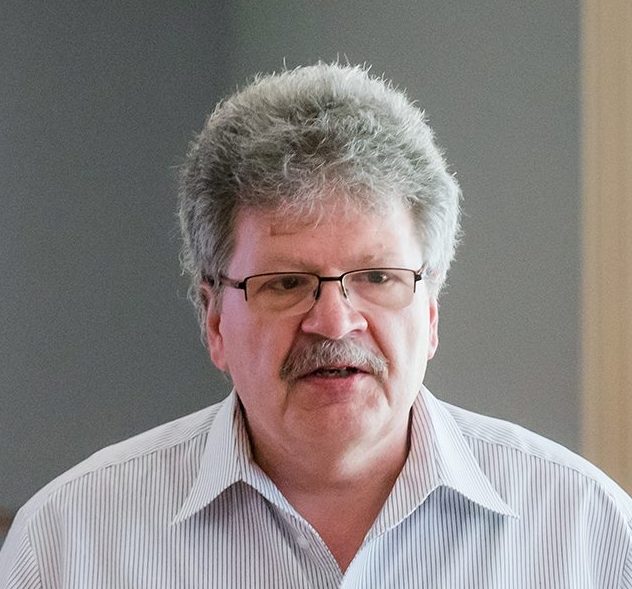
Dr. Detlev Bohle by Integral European Conference 2016
Service excellence, knowledge intensive service development and wisdom based services are discussed. The review of the present of wisdom based services is based on integral theory.
Abstract
From the complex landscape of needs of companies and individuals alike a new type of services is emerging for which the terminus wisdom based services is proposed. In this paper we look at what makes wisdom based services different from knowledge intensive services, and first principles for developing wisdom based services are proposed.
Wisdom based services are characterized by a few basic attributes. The approaches are holistic, rooted in the mundo-sphere. They are based on the junction of head, heart and hand. Communication is level 4 communication [Scharmer, 2007] which connects the systems actors with each other as well as their highest future possibilities while considering a higher purpose. Social technologies function as the enabler. The objective of wisdom based acts is never solely determined economically. It serves a higher, ethically defined interest.
Preface
In this article we contemplate a new kind of services, services that are made possible by integrally informed leadership which is holding the space to let this new brand emerge. What integrally informed leadership is under discussion itself [Lucas, 2012]. The related services I will be calling wisdom based in this article.
To offer a first glimpse let be set the framework by opening with a couple of quotes which provides a container for the discussion. In the heart of Dublin in the ancient library of Trinity College there is a manuscript of the Christian gospels from the ninth century – the book of Kells [UNESCO, 2011]. The script is elaborately crafted and adorned. Initials have been decorated with detailed celtic design in bright colors. “Turning Darkness into Light“ is the title of the 2013/2014 exhibition as well as the challenge to integrally informed leadership today – twelve hundred years later. The book which was crafted in the dark ages is still an inspiration to improve living condition of all beings we share our planet with.
Our deepest fear is not that we are inadequate. Our deepest fear is that we are powerful beyond measure. It is our light, not our darkness that frightens us. We ask ourselves, who am I to be brilliant, gorgeous, talented and fabulous? Actually, who are you not to be? You are a child of God (your playing small doesn’t serve the world. There is nothing enlightened about shrinking so that other people won’t feel insecure around you). We were born to manifest the glory of God that is within us. It’s not just in some of us, it’s in everyone. And as we let our own light shine, we unconsciously give other people permission to do the same. As we are liberated from our own fears, our presence automatically liberates others.
Marianne Williamson
This quote is attributed to Nelson Mandela to have quoted Williamson [1992] in his inaugural speech as president of South Africa. This is however uncorroborated and later withdrawn [explorers foundation, 2014]. If you read Williamson´s text it becomes evident why this statement resonates the life and history of the myth Nelson Mandela has become.
The fiction “The prophet“ [Gibran, 1923] is about the
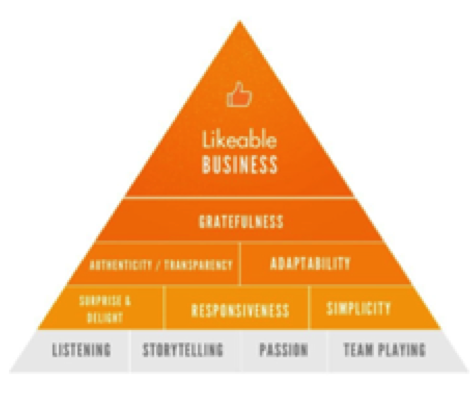
Likeable Business (Kerper, 2012)
big questions of life purpose: Live, Love and Death. Questions we have to answer also today. Gibran´s work philosophically is seen as a tie between Christian faith and Sufism. As such his work has become a current issue for present discussions.
Todays business leadership requirements according to Kerpen [2012] move towards the green meme and maybe a bit beyond. Organizations are supposed to be likable, customers want to feel grateful, they expect authenticity and transparency, they hope for surprises and want to be delighted focussing on responsiveness and simplicity. Organizations are expected to learn to listen, to tell their stories, are passionate and team players.
Setting Out?
In 2003 Watkins [2003] draws the conclusion that about 58% of new executive officers which are brought in from outside of the organization fail within the first 18 months. A short bit later a survey of Executive Round Tables brought to the forefront [corporate executive board, 2005] that 89% of newly hired managers agree to not having the full set of capabilities and knowledge that would be required for the tasks they are charged with.
In their 15th global CEO survey PriceWaterhouseCoopers raise the following finding: “Only 30% of CEOs are ‘very confident’ that they will have access to the talent they need over the next three years [PWC, 2014].” Otto Scharmer [2014] comments in his Huffington blog that the present day business environment characterized by the above is a symptom of “collective sleepwalking“ leading to three divides which cannot be overcome with the prevailing mindset:
- the ecological divide between self and nature,
- the social divide between self and others and
- the spiritual divide between self and SELF (i.e. our higher self in contrast to day-to-day ego).
The crisis starts in our own minds, based in outdated paradigms of economical thinking. Scharmer (2014, 2013) calls the necessary revolution an “ego to eco shift” which needs a new leadership culture with the quality of mindfulness based collective action.
Bozesan [2012] studies the economical shift invoked my a new mindset as well as the leadership behavior of decision makers with economic responsibility. Her question is why some investors care about the parity of people, planet and profit while others don´t. In figure 1 we see the transition from a traditional, profit-oriented view on investment to impact investment toward integral investment. Bozeman [2012] started her study in 2008 and surveyed 132 wealthy individuals (Fortune 500, Business Angels).
Bozeman [2009] her method heuristic structuralism. Further, in line with Scharmer [2014, 2013] Bozesan [2012] finds the on-going ecological crisis a crisis of consciousness.
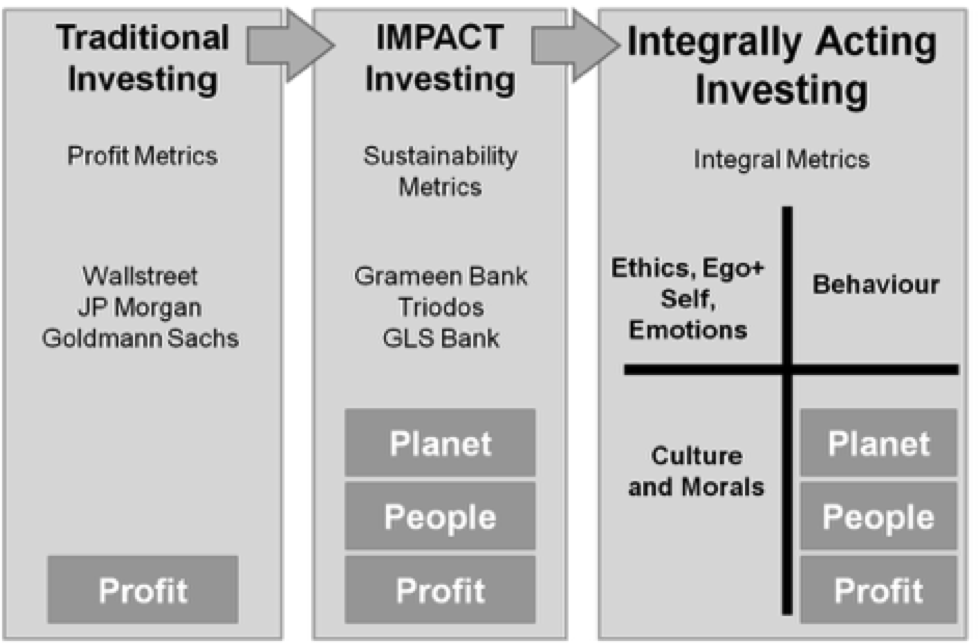
Figure 1: from Traditional Investment towards Integrally acting Investment (Bozesan, 2012)
Bozesan [2012] concludes from her interviews that a small but growing number of wealthy investors are at post-conventional stages of ego-development [Cook-Greuter, 2008] using the stages of Campbell´s [1949] hero´s journey“ to give some developmental details ( i.e. departure, initiation, return).
With sixteen individuals having returned to investment after initiation Bozesan [2012] finds an enhanced set of investment criteria that now include:
- awareness
- ethics
- culture
She also finds that this leads to a clear financial advantage where good to great companies have an increased factor of three return on investment (ROI). Further, there is an eight times higher ROI over ten years ( i.e. BMW) and the few known integrally managing companies ( i.e. Whole Foods) show an eleven times higher ROI over ten years.
It should be noted here that a purely financially motivated copy of the business model of integrally acting companies is not very promising from the point of Campbell´s hero´s journey. The fight with your inner dragon can neither be motivated nor be won that way.
Integrally informed leadership
Todays business environment is conceived as VUCA: volatile, uncertain, complex and ambiguous [Promitto, 2012]. The concept formalized by the military was taken up by the business world. Promitto´s website summarizes it as follows. “We thought we had it all under control. That we could plan and control everything with science and technology – always getting better results.”
The world is VUCA – volatile, uncertain complex und ambiguous.
The challenge of our time is to remain capable for action and capable for making decisions in a VUCA world [Promitto, 2012]. “For me this is a very concise description of the feeling that the present v-memes at work in the business environment are now no longer sufficient. A new way of managing in the integral age is now actively being co-created. Thus it is not very surprising that integrally informed leadership is indeed emerging just now.”
In Figure 2 forms of work organization are being related to the v-memes that gave rise to their emergence. It is exciting that the development which was so moderate for thousands of years is now speeding up exponentially.

Figure 2: Forms of Work Organization Table
The organization of work is strongly correlated with methods of measuring progress and assessing the quality of the work performed. The first documented quality method was the measuring of lengths when building the pyramids in Egypt. The overseer might be seen to use his whip to “correct“ mistakes made. Such a behaviour would be in line with the red meme. In the early middle ages, in the German Free Cities, the guilds created on oversight system – the rules of the “Schaumeister“ – which translate roughly to “inspectors.“ These inspectors for example had the oversight when building cathedrals and were controlling the work both the other craft masters working at a site. Craft master inspectors were chosen by their guild, highly honoured and respected. Deviation from the rules were severely sanctioned and controlled by the guilds. The hour of God was the guiding vision of this world view. This is the blue meme.
With upcoming industrialization work division of labour is replacing the manufactory. The risks of steam engines are made controllable by means of processes which were descriptor in VDI standards-VDI being the German association of engineers. Economic success is possible. Everything seems feasible now. Strict quality control sorts out nonconforming products. This way of thinking correlates to the orange meme.
During the time of the World Wars mass production is set up in competition for the growing consumer markets which needs different methods and approaches. Especially nuclear weapon production has very special requirements. Production control is advanced, product quality comes into focus. Deming invents the PDCA cycle: plan-do-check-act. Unlimited economic growth still seems possible.
In the sixties East and West undertake national large aerospace projects. Quality Assurance and Product Assurance in projects are implemented oriented on product quality, reliability, and safety as well as the goal which is to be reached. System safety as a discipline is formalized within the container of the Apollo program. Mutual trust in industrial partnerships is assured by Second-Party-Audits. The transition from orange to green meme thinking is initiated by the insight of the Club of Rome, that the limits to growth is limited by the resources of Earth [Meadows, 1972].
In the eighties labour division becomes truly international, the global village begins to form. Labour division is still predominantly company internal. The quality system standard ISO 9001 is first published in 1984. Certification of management systems is starting (Third-Party-Audits). Total Quality Management is developed, the European Foundation for Quality Management is founded. Economic success is understood as success in which everybody is taking part. Projects adapt to mission assurance and process orientation is introduced throughout private and public organizations.
Starting about the nineties labour division has gone global, customer supplier networks are organized and refined. Management system standards begin to proliferate. In addition to quality, environment as well as industrial health and safety sector specific standards are introduced. The necessity to integrate all this systems is felt and acted upon. Systemic thinking becomes necessary to order the manifolds and to contribute to economic success with limited resources. The transition to the yellow/teal meme becomes apparent.
With the transition into the new millennium a stakeholder orientation – people, planet, profit, in international customer-supplier-networks is becoming more pronounced.
Responsibility oriented standards are recognized as necessary to structure responsible networks (the UN Global Compact, ISO 26000) while proliferation of systems continues.
Change management, complexity management, generic management [Winzer, 2011] structure the requirements and make structures transparent. With Theory U [Scharmer, 2007] and the approaches to high reliability organizations (HRO, [Weick, 2001], etc), it becomes possible to see what is coming across the horizon, i.e to look forward instead of driving from the view of the rear mirror. Those organizations which apply these approaches are better equipped to master the ensuing crisis.
Since ca. 2006 holistic approaches are around and early adopting organizations are coming out [Fehrenstein, 2014; Bozesan, 2012; Laloux, 2014]. Labour division of an integral informed leadership team is still more networked, along the example of living organisms. Non-profit organizations, regulatory bodies and industry are in dialog. It is becoming noticeable that companies are using Presencing [Scharmer, 2007], Facilitation [Mindell, 1997], and Commitment Conversations [Kofman, 2005, 2014] to address current issues. The present challenge is to work together towards the benefit of all beings and being ONE at the same time, ending dual thinking effectively.
What is to be understood as integral informed leadership is still in the process of being conceptualized. Lucas [2012] finds the the following synonyms:
- Holistic Management
- Neo-integral Leadership
- Integral Leadership
- Holacracy
- Conscious Business
- Capitalism 4.0.
The following definitions have been proposed:
- Integrity with a quality of presence that opens spaces for what wants to emerge [Reams, 2012]
- Practice of wise leadership leading to … the relational authenticity of individual and collective [Küpers, 2012]
- The dynamic bio-psycho-cultural-systemic capacity of a group to develop human systems at multiple scales of complexity to achieve some shared outcome [Hamilton, 2012]
The proposal of Metaintegral [Brown, 2014] is shown in Figure 3.

Figure 3: MetaIntegral Definition [Brown, 2014]
The following commonalities emerge: necessary ingredients of an integral informed management are integral thinking (AQAL), mindfulness, methodical pluralism, and a value based view (SDI).
Second tier methods which support an integrally informed leadership view are shown in Figure 4.
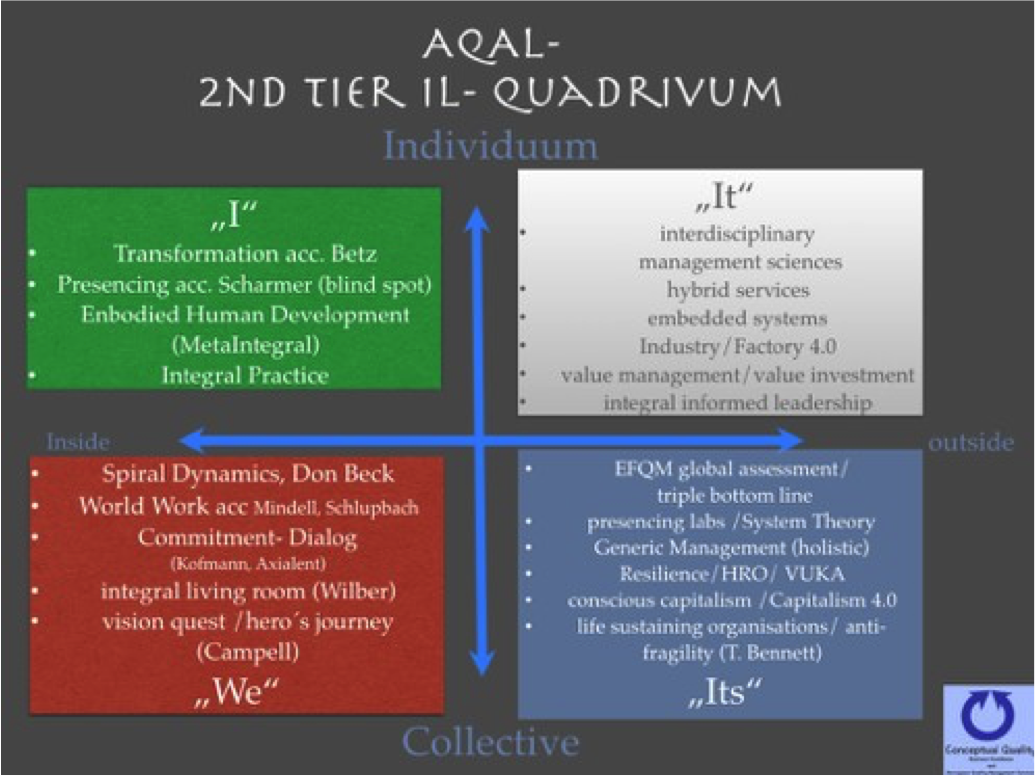
Figure 4: Integral Leadership Method Quadrivium
In addition to the already mentioned approaches the following might be considered as relevant: Integral practice [Patten, 2008], Transformation [Betz, 2012] in the first quadrant, worldwork [Schlupbach, 2012], integral living room [Aurami, 2013] in the second quadrant. Fields of study where the level of complexity might give rise to new emergences will be interdisciplinary leadership approaches, hybrid services industries, industry 4.0, embedded systems, value investment as well as lucid quality in the context of integrally informed leadership. In the fourth quadrant we find the presenting hubs of MIT [Scharmer, 2013], EFQM global assessment, mindfulness, conscious capital- ism, life sustaining organizations [Sales, 2010] as well as anti-fragility [Bendell, 2014].
Knowledge
When we talk about knowledge, it is helpful to clarify where we stand today. Coming from Plato, Knowledge is true, justified opinion [Plato-400]. It took a long time to refine the blue meme formulation – more than 2000 years. It was Russel [1912] who clarified using the scientific method: “We can only talk about knowledge if a conclusions premises do not need to be known (derived knowledge).”
Carl Friedrich v. Weizsäcker [1986] one hundred and fifty years later formulated the first teal view on knowledge: “At the end of the discourse on the Structure of Physics we should say what kind of conception of knowledge has led us when we discussed physics as knowledge in time. We have not only made knowledge a premise. We also described it rudimentarily moving in a circle as representational. We also looked for semantic consistency; this is a formula for making our theory knowledge. In a final step beyond quantum theory we have not excluded the representational possibility of transpersonal knowledge. We have postulated transpersonal knowledge, even if in form of a question, as a premise for the possibility of all finite knowledge.“
Schmitz and Zucker (2003) shortened it which a yellow twist to: “Knowledge is… a provisionally true state variable and a self-referencing process [Schmitz & Zucker, 2003]. “Fred Kofman [2005] provided the fourth quadrant addendum which provides impact to knowledge: “Knowledge is the ability to act effectively to obtain intended results. Learning is the process of internalizing new knowledge.“
Otto Scharmer [2007] distinguishes three epistemologies of knowledge as shown in Figure 5.

Figure 5
Transpersonal Knowledge which also Weizsäcker [1986] postulates is the very Source from which our development towards our highest future possibilities is co-created [Scharmer 2013]. Epistemologies K1 and K2 have enabled the industrial revolution until the turn of the millennium. In order to co-create an evolution towards a sustainable world we need to organize from the basis of epistemology K3.
In an knowledge based view of value creation it is the appeal to our associates to work purpose and goal oriented, effective, networked, and self responsibly. The mobilization of the intellectual potentials of the community of co-creators and open source communities make the determination of stakeholder knowledge a possibility as well as the derivation of stakeholder needs. Associate empowerment realizes root source problem solving.
Regional availability of the production factors remuneration, competencies, and quality of life define the framework for new products and services through acquired knowledge and proven capabilities. A civilizing competition makes the development of uniqueness possible, however, only as a monopoly for a time. In the framework of time determined changes in a given market the innovative idea and the knowledge behind it are the decisive factors in competition which lead to price performance optimized solutions while maintaining individual as material resource efficiency and make sustainability feasible.
Leading in collective mindfulness puts forward goals that motivate without prescribing a solution in any way, trusting in the competence in the community of co-creators of which management is just one part. The leadership paradigm changes.
While in the orange meme the view on the leader required the leader to know what was to be done to come to defined results, the view on leadership emerging now is much more open and is holding the space to allow the highest future possibilities of the organization to emerge [Laloux, 2014; Goldmann & Schuyler, 2014]. This inspired, spiritual leadership thereby reascends and includes competition mechanisms since synergistic purposes can make K2 based market mechanism irrelevant [Laloux, 2014; Scharmer, 2007]. Given the complexity of interactions in todays society Otto Scharmer´s Theory U [2007] shows consequences for knowledge management changing the structure of attention from “I in me“ to “I in you“ to “I in the Now.” The change of the way of attending allows a change of organizational structures from central hierarchies to networked structures towards innovation ecosystems. In the mundoshere governance moves from the hierarchy to the market, to cooperation and – finally and hopefully- to collective mindfulness. The later stage is still not very embodied. K3 communication today is rather an exception – this is our challenge.
Knowledge intensive Services
While the USA and Finland in 2009 had a level of servitisation around 50%, the majority of developed countries are currently at 20-30%. Between 2007 and 2009, Neely [2010] observed an increase of about 5%. Even though a trend towards more servitisation is visible, still more than 60% of Western companies identify themselves as producers. Those organizations which identify themselves as service providers or hybrid manufacturers are developing their business towards Business Excellence. In accordance the the service excellence standard (Fpr Cen TS16880) they agree to keep promises, to have adequately manage customer complaints, offer a personal touch and just a bit more service. The excellence of service is characterized by seven cultures [DIN, 2011]:
- Innovation Culture
- Enthusiasm Culture
- Failure Culture and Zero-Fault-Mentality
- Service Culture
- Transparency Culture
- Change Culture and
- Benchmarking Culture.
In the discussion paper “The Future of Work“ McKinsey Global Institute studies where new work places were created in the USA from 2001 to 2009. They study production, transaction, and interaction. In production there was a decrease of employment by 3%, in administration by 1%, while knowledge based services grow by 5% [McKinsey, 2012]. They expect that this tendency is going to continue.
A holistic vision in Wilber´s [1996] integral AQAL (all quadrants, all lines) approach applied on knowledge based services requires to look at services holistically seeing the whole and from the WHOLE, world centric and across sectors (Private, not for profit, regulative authorities).
Figure 6 shows the AQAL view on services. The third Quadrant shows products and services as well as hybrid and integrated services. The fourth quadrant gives us insight into the observable system which is producing the services. In the second quadrant we are in communion with each other, our culture, and our organizations, myths, and creation stories. The first quadrant is about the values of the acting people actually providing the service.
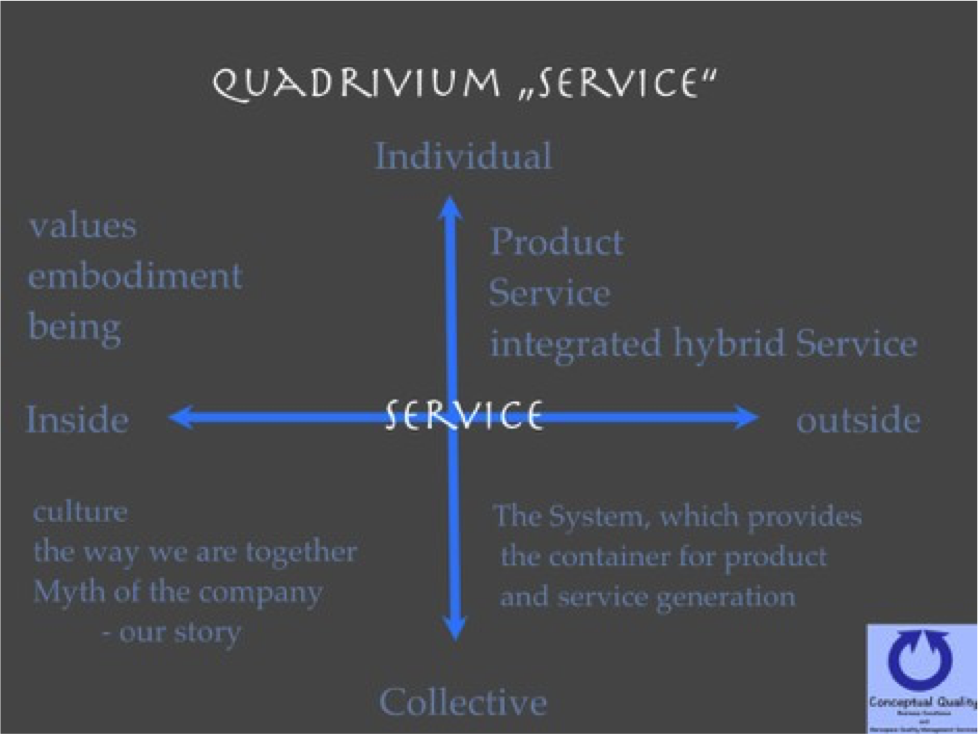
Figure 6: AQAL View on Services
The personal value structure reaches into second tier [Beck, 1996]. Action is motivated by love, authenticity and wholeness in the unity of head, heart, and hand. The leading intelligence is the intelligence of the heart not of the mind. Being in communities we attend to our highest future possibilities [Scharmer, 2013] allowing co-creation from the collective field supported by level 4 Kommunikation (K3) [Scharmer, 2007].
Wisdom
The word “Wise“ has its root in the Middle High German language, i.e. wīs, wīse.
Its meaning is explained [Wikipedia, 2015b] as “prudential, astute, experienced, adept, skillful.“ Wisdom or sapience is the ability to think and act using knowledge, experience, understanding, common sense, and insight. Wisdom has been regarded as one of four cardinal virtues; and as a virtue, it is a habit or disposition to perform the action with the highest degree of adequacy under any given circumstance, and to avoid doing anything wrong. This implies a possession of knowledge or the seeking of knowledge application to the given circumstance. This involves an understanding of people, objects, events, situations, and the willingness as well as the ability to apply perception, judgement, and action in keeping with the understanding of what is the optimal course of action. It often requires control of one’s emotional reactions (the “passions”) so that the universal principle of reason prevails to determine one’s action.
In short, wisdom is a disposition to find the truth coupled with an optimum judgement as to what actions should be taken [Wikipedia, 2015b]. This is an explanation which brings together aspects of integrally informed decision as discussed above; close enough to propose here to name services which are based on integrally informed deci- sion making wisdom based. This proposal is explained further in relation with the AQAL aspects of truth as shown in Figure 7, see also Esbjörn-Hargens [2012].
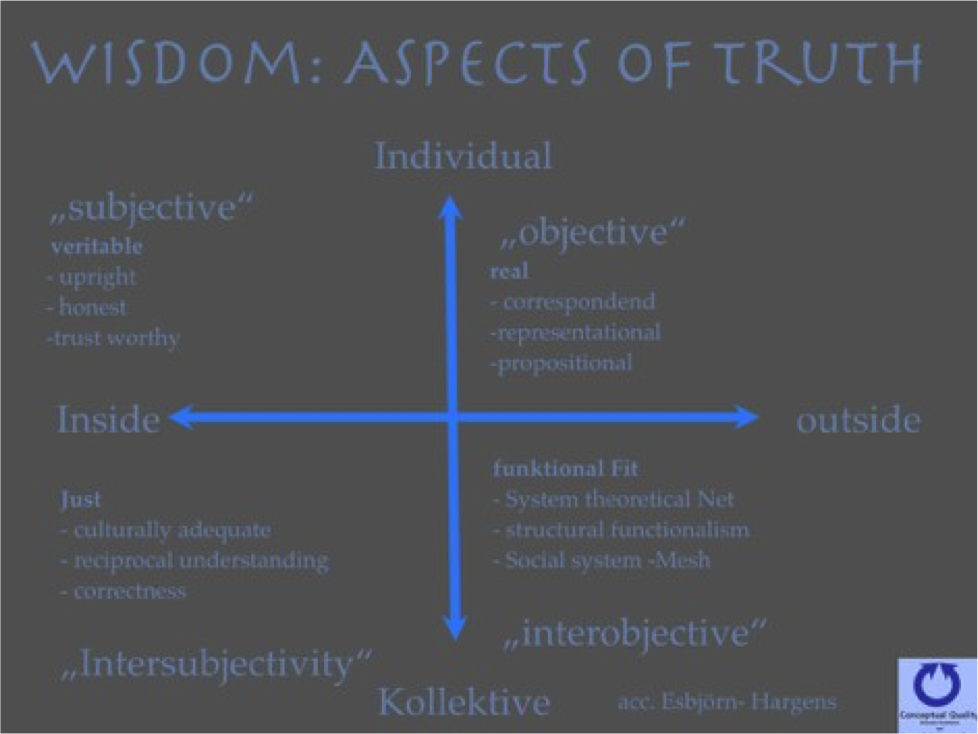
Figure 7: Wisdom: Aspects of Truth [Esbjörn-Hargens, 2012]
A holistic view of the world recognizes that humanity has made the world its ecological niche [Senge, 2014]. This niche has entangled problems [Millenium Project, 2014] which are not just an superposition allowing for solutions one after the other. The world today is as our decisions so far have made it. Together we have co-create facts which nobody wants [Scharmer, 2007]. How long have people yearned for peace? Scharmer [2013] visualizes the crises in three basic divides:
- the ecological divide between self and nature
- the social divide between self and others
- the spiritual divide between self and Self.
The root cause for this divides according to Scharmer [2013] is our thinking in old school economies – state centric, free market, and the social market. Transforming our thinking he challenges us to step into a cross-sector co-creative economy based on presenting, seeing, and action holistically. Foundations of all economic acting is an ecosphere consciousness local as well as on the global scale [Hamilton, 2008]. It is kind of co-creative thinking which allows wisdom based services to emerge.
The change of economic context is shown in Figure 8.
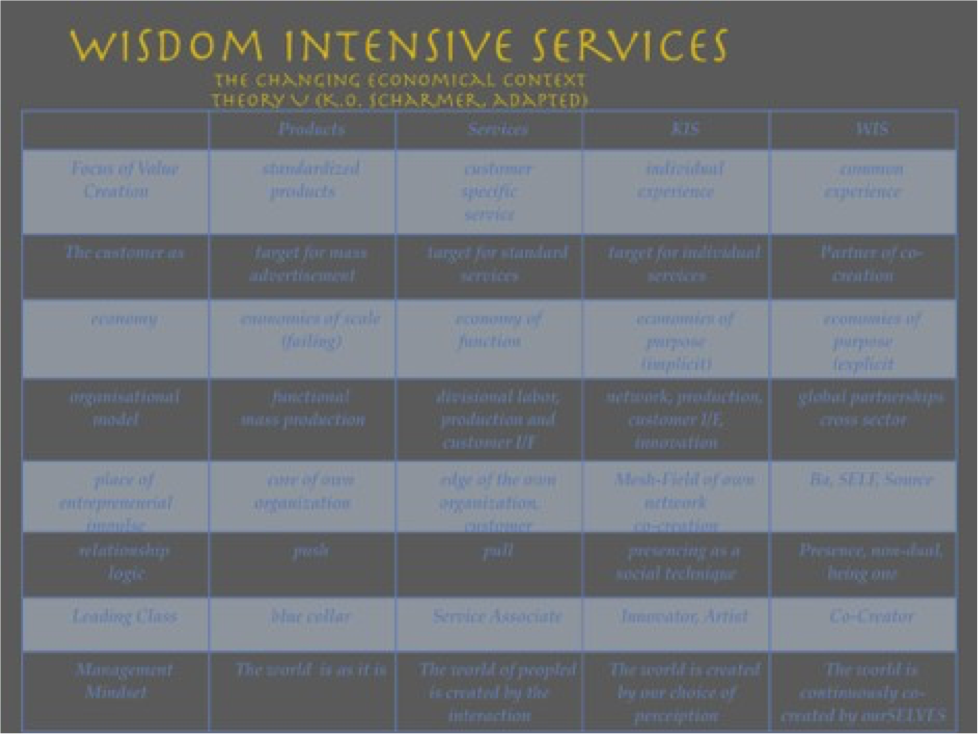
Figure 8: Change of Economic Context
Under study is the focus of value creation, the role of the customer in service provision, the predominant economy, organizational models, the place of the entrepreneurial impulse, relationship logic, role of management, and related mindset. The structure of figure 8 is taken from theory U [Scharmer, 2007] and amended by a column on wisdom based services (WIS) in this work.
In the Generic Management Model [Winzer, 2001], we see the transition from standardized to individual and finally commons integrating services.
In innovation and knowledge intensive services it is still about the individual in a level 1-3 economic context. Wisdom-based services consider also the common as well as the transpersonal. In many ways wisdom based services are about co-creating a responsible use of common goods – “Stewartship of the Commons“ [Senge, 2010] – requiring to co-create a new economic context.
Wisdom based services – the example of the gratitude economy
To change the world we change ourselves. That has been a message of the perennial wisdom tradition since more than 2300 years [Scharmer, 2013; Service-Space.org, 2015: Laotse-300 ]. The message oft the non-profit organization Service-Space which was founded in 1999 has been spread by Nipun Metha promoting the value of generosity [ServiceSpace.org, 2015 ]. Metha calls his concept “giftivism.“ Giftivism starts from the question “what can I give?“ rather than “what do I need / want to have?“ Giftivism is practice of radically generous acts, which change the story of the world.
The best known ServiceSpace project is a restaurant in San Francisco called Karma-Kitchen, which has been run on a voluntary basis since 2007. More than 24000 meals have been served. The bill after the meal is 0$. Since the meals are served in the spirit of making a gift, guests are empowered to contribute from the heart: paying forward – a gift for the next guest who will come.
This co-creates a chain where the linked are being forged by generosity. It does not break. The concept has been copied even to China.
Whenever small acts of giftivism come together gratitude blooms in the heart and a gratitude economy emerges. The focus the giving and receiving of a gift – which does not have a price but is priceless instead. Such an gratitude economy is characterized by four fundamental shifts [ServiceSpace.org, 2015 ]:
- consumption to contribution – value what you get and pass it on
- transaction to trust – rely on our interconnectedness – being One
- isolation to community – cultivate a network of mutual gift ties
- scarcity to abundance – experience the generative power of gratitude.
ServiceSpace has determined three constraints for its organization. ServiceSpace is run by volunteers to open up to the power of compassion. There is no fund raising to focus on providing value und to discover untapped capital. The focus is on many small acts to empower peer to peer links that create synergistic capital. The resulting abundance is a challenging concept which Metha [ServiceSpace.org, 2015 ] summarizes with the words of Gandhi: “The world has enough for everyones need but not enough for everyones greed.“
The quality of a service looks different in all quadrants (figure 8). In the third quadrant you will find the property of a product and service. The fourth quadrant characterizes the systematics of its enactment. This can be studies by means of generic management or EFQM assessments as well as mindfulness [Weick, 2001] and Co-Creation in Innovation Labs [Scharmer, 2013].

Figure 9: Wisdom Based Service Based Quadrivium
The Gestalt of Qualität as shown in second quadrant is reflected by the creative tension between serving and leading, giving, and receiving, in blessing and giving thanks, taking into account their natural cycles [Braungart, 2009]. The service aspect of being emerges as peace, gladness, abundance, and freedom [Betz, 2012].
Summary
The quality of our values determines the quality of the service we are able to provide. The number of co-created approaches and service offerings which are being prototyped is presently increasing quite dramatically. It will be very interesting to see which prototypes will manifest themselves as a new teal modus operandi in a co-creative economy. Design Engineering is a necessary of holistic development of wisdom based knowledge intensive services. The mental model of design engineering is systems thinking. In order to co-create the New which is about to emerge we deduce and sense what lies beneath the symptoms we observe [Senge, 2010].
Design Thinking [Brown, 2008] has become a powerful instrument of co-creation. In service design this is about smoothly integrating product and service. Design Thinking puts the view of the customer as the service receiver in the focus of our attention.
The way we attend determines what we see as possible and what can be realzed. The diversity of views we can bring together is often the best we can give [Brown, 2008]. Only as a community we really see clearly what is coming across the horizon as our highest future aspiration [Scharmer, 2013]. The new business excellence approach [EFQM, 2013] is well suited to ensure that results are intended and only intended results are realized.
Starting point for new wisdom based services is all the New which is now emerging in our one connected world which is our home. These services are part of the social innovations which are popping up in the last few years. Often they are based on those social network technologies which have become application ready.
Part time networks dissolve organizational boundaries since hierarchical structures are not well suited to cope with the amount of change which is required today. The quality of communication get primary attention and self organizing network replace traditional hierarchies. Wisdom based services are informed by relevant knowledge and led by trusting the wisdom of the heart with keeping in mind the highest future possibilities of service provider and receiver and the related societies.
References
Scharmer, C.O.; 2007, Theory U: Leading from the Future as it Emerges, Society for Organizational Learning, Cambridge M.A., ISBN-13: 978-0974239057
Lucas, M.G.; Fischer,L. (Hrsg.);2012; Neointegrale Führung und Organisationsentwicklung; Wirtschaftspsychologie, III 2012, ISSN 1615-7729
[UNESCO 2011] UNESCO / Memory of the World – Register, 2011, reviewed on 30. Juli 2013, http://www.unesco.org/new/en/communication-and-informa tion/flagship-project-activities/memory-of-the-world/register/ full-list-of-registered-heritage/registered-heritage-page-1/ book-of-kells/
Marianne Williamson, Return to Love, Harper Collins, 1992; HarperOne; Reissue edition (March 15, 1996), ISBN-13: 978-0060927486
http://explorersfoundation.org/glyphery/122.html entered before July 9, 2006; edited/updated June 20, 2014 reviewed 2.8.2014
Khalil Gibran, Der Prophet, Patmos: 3. edition 2013 (11. January 2012), ISBN-10: 3843601755, (published 1923 http://wikilivres.ca/wiki/The_Prophet, full text, reviewed on 10.8.2014
Likeable Business: Why Today’s Consumers Demand More and How Leaders Can Deliver , Paperback – October 30, 2012, Dave Kerpen , Theresa Braun, Valerie Pritchard http://www.amazon.com/Likeable-Business-Consumers-Leaders- Deliver/dp/0071800476, Graphic reviewed on 23.9.2013,
PWC.com, Delivering results through talent-The HR challenge in a volatile world, 15th Annual Global CEO Survey http://www.pwc.com/es_MX/mx/servicios-recursos-humanos/archi vo/2014-02-delivering-results.pdf reviewed on 10.8.2014
- D. Watkins, The First 90 Days: Critical Success Strategies for New Leaders at All Levels, Harvard Business Review Press; First Edition (1. Oktober 2003), ISBN-13: 978-1591391104 http://www.amazon.de/The-First-90-Days-Strategies/dp/ 1591391105 reviewed on 10.8.2014
https://rr.executiveboard.com/Public/RRintheNews.aspx#2 reviewed on 10.8.2014; January 31, 2005, BrandWeek,New Job? Go Hire A Transition Coach, “Most companies today do not have a formal program of indoctrinating new executives. And not surprisingly, a recent survey by the Corporate Executive Board’s Recruiting Roundtable found that 89% of new hires across enterprise organizations did not have the optimum level of knowledge and tools necessary to do their job.“
Otto Scharmer,. 2014. http://www.huffingtonpost.com/otto-scharmer/collective-mindfulness-th_b_4732429.html, reviewed on 14.8.201O Leading from the Emerging Future: From Ego-System to Eco-System Economies, K.O. Scharmer, K. Käufer, Berrett-Koehler Pub lishers, 2013, ISBN-13: 978-160509926
Bozesan, 2012. Wirtschaftspsychologie, III. 2012 ISSN1615-7729, Neo-integrale Führung und Organisations entwicklung; M. Bozesan, Why some investors care about the parity of people, planet and profit and others do not, S.100
Bozesan, 2009. The making of a conscious leader in Business: an integral approach, Ph.D. thesis, Institute of Transpersonal Psychology, Palo Alto, California, 2009
Cook-Greuter, S. R., 2008. Mature ego development: A gateway to ego transcendence? [Electronic version]. Journal of Adult Develo pment, 7(4), 227-240.
Campbell, J; The hero with a thousand faces,Verlag: New World
Lib; Auflage: Second. (30. April 2012),ISBN-13: 978-1577315933 (originally published 1949)
Promitt, 2012. website: http://www.promitto.at/ reviewed 2013, since then the
concept has proliferated the literature
https://hbr.org/2014/01/what-vuca-really-means-for-you
https://www.zoe-online.org/zeitschrift/einblick-grafiken/einblick-ausgabe-415/
Deming, E.; 1986, Out of the Crisis, Cambridge, Mass.:
Massachusetts Institute of Technology, Center for Advanced Engi neering Study, ISBN 0-911379-01-0. OCLC 13126265.
Meadows D.E., , 1972, The limits of Growth, Die Grenzen des Wachstums Übersetzung von Hans-Dieter Heck, 14. Aufl., Deutsche Verlags-Anstalt, Stuttgart, 1987, ISBN 3-421-02633-5: S. 17
Petra Winzer (Hrsg.), 2011, Anforderungsgerechte Produkt- und Dienstleistungsentwicklung im Rahmen des Wuppertaler Generic- Management-Konzeptes, Band: 2011,2, Reihe: Berichte zum Generic-Management, ISBN 978-3-8440-0207-2, Juli 2011
Weick, K.; Sutcliffe, K.; 2001, Managing the Unexpected: Assuring High Performance in an Age of Complexity, Jossey-Bass, Universi ty of Michigan Business School Series, ISBN-13: 978-0787956271
Fehrenstein, G. 2014, Zappos just abolished bosses. Inside tech’s latest management craze. – Vox, http://www.vox.com/ 2014/7/11/5876235/silicon-valleys-latest-management-craze-ho lacracy-explained, reviewed on 16.7.14
Mindell, A.; 1997, Der Weg durch den Sturm, ISBN 978-3-928632-29-4, Via Nova Verlag, Petersberg.
Kofman, F., 2005, Meta-Management: Der neue Weg zu einer effektiven Führung, Kamphausen Verlag, ISBN-13: 978-3899010565
www.axialent.com, reviewed on 14.9.2014
- Reams, J; Caspari, A. 2012 Integral Leadership: Generating Space for Emergence through quality of presence, Neointegrale Führung und Organisationsentwicklung; Wirtschaft spsychologie, III 2012, ISSN 1615-7729
Küpers, W.M., 2012, Die Bedeutung praktischer Weisheit für die integrale Führungs- und Organisationspraxis, Neointegrale Führung und Organisationsentwicklung; Wirtschaftspsychologie, III 2012, ISSN 1615-7729
Hamilton, M.; 2012 Leadership to the power of 8, Neointegrale Führung und Organisationsentwicklung; Wirtschaftspsychologie, III 2012, ISSN 1615-7729
Brown, B.C.; 2014, The Future of Leadership for Concious Capital ism, Metaintegral, https://associates.metaintegral.org/sites/default/files/MetaInte gral_Brown_ The%20future%20of%20leadership%20for%20conscious%20capi talism_20140402.pdf, reviewed on 7.4.2014
Patten, T.; Wilber, K., Leonard, A.; Morelli, M; 2008, Integral Life Practice: A 21st-Century Blueprint for Physical Health, Emotional Balance, Mental Clarity, and Spiritual Awakening, Integral Books, ISBN 978-1590304679
Betz, R; 2012, „Welcome to the Realm of Abundance“, Willkommen im Reich der Fülle, Koha, ISBN: 9783867280389
Schlupbach, M.;2012; Transformation von Organisationen, Kollektiven,Unternehmen und der Öffentlichkeit, S.317, in
Hänsel, M.Hsrg. ; 2012; Die spirituelle Dimension in Coaching und Beratung, Vandenhoeck & Ruprecht, ISBN-13: 978-3525403426
Aurami, A; The Integral Living Room, Boulder, Colorado, USA October 31 – November 3, 2013 in http://integralleadershipreview. com/11117-integral-living-room-boulder-colorado-usa-october-31- november-3-2013/reviewed November 2013
Sales, M. J. , Savage, A.; 2010; Art of the Future, info@artofthefuture.com.
Life-Sustaining Organizations: A Design Guide Library of Congress Cataloging Number: 2010909269
Bendell, T.; 2014, Building Anti-Fragile Organisations: Risk, Opportunity and Governance in a Turbulent World, Gower Publishers, Farnham, Surrey, ISBN-13: 978-1472413888
Scharmer, O.; Kaufer,K; 2013; Leading from the emerging future, from Ego-System to Eco-System Economies,Berrett-Koehler, San Francisco, ISBN 978-1-60509-926-2
Laloux, F.; Reinventing Organizations; Nelson Parker, Brüssel, 2014; ISBN 978-2-960133-50-9 Platon -400]
Goldmann Schuyler, K.; Leading with Spirit, Presence & Authenticity, Jossey-Bass, 2014, ISBN 978-1-118-82061-2
Platon, Theaitetos 201d-206b.
Russell, B; The Problems of Philosophy, 1912, german translation in ISBN 3-518-10207-9
Weizsäcker, C.F., 1986. Aufbau der Physik, Hanser Verlag , ISBN 978-3-446-14142-1 ( the translation has done by me, D.B.)
Schmitz, C.; Zucker, B.; Wissensmanagement, Metropolitan Verlag, Regensburg, Berlin 2003
DIN, 2011. DIN SPEC 77224:2011-07; Erzielung von Kundenbegeisterung durch Service Excellence forEN TS168890, Service Excellence
EFQM, EFQM Excellence Modell 2013, Brüssel; http://www.shop.efqm.org/publications/efqm-excellence- model-2013/reviewed on30.8.2015
Neely, A; The Servitization of Manufacturing: An Analysis of Global Trends; 8. Dienstleistungstagung des Bundesministeriums für Bil dung und Forschung (BMBF) “Mit Dienstleistungen die Zukunft gestalten”, 22. + 23.4.2010, Berlin
Manyika, J.; Lund, S; Auguste, B; Ramaswamy, S.; Help wanted: The future of work in advanced economies –Discussion Paper, McKinsey Global Institute, 2012, http://www.mckinsey.com/insights/employment_and_growth/ future_of_work_in_advanced_economies, reviewed on 2.2.2015
[Wilber 1996] Wilber, K.; Eros, Kosmos, Logos (Frankfurt 1996), S.161
Beck,D.; Cowan, Chr.; 1996;: Spiral Dynamics: Mastering Values,Leadership, and Change. 1996, ISBN 1-55786-940-5. (dt.: Spiral Dynamics – Leadership, Werte und Wandel. 2007, ISBN 978-3-89901-107-4)
The millennium Project, 15 Global Challenges, http://www.millennium-project.org/millennium/challenges.html reviewed on 31.8.2015
Senge, P., 2014 , Systems Thinking for a Better World, Keynote at Aalto, Finland, Systems Analysis Laboratory 30 years anniversary, http://sal30.aalto.fi/ reviewed on14.7.2015
http://de.wikipedia.org/wiki/Weisheit reviewed on 7.6.2015
Esbjörn-Hargens, S.; 2012, Tetra-Dynamics,Meta-Integral Publishers; Sebastopol, CA
Hamilton, M.; Integral City, New Society Publishers, 2008, ISBN 978-0-86571-629-2
Winzer, P.; Generic-Management; Vision und Strategie, Shaker-Verlag, Band 1/2001; ISBN 978-3-8265-9510-3
Senge, P; Smith, B. , Kruschwitz ,N., Laur J.;Schley , S.; The Necessary Revolution: How Individuals and Organizations Are Working Together to Create a Sustainable World; Crown Business; 2010, ISBN-10: 0385519044,ISBN-13: 978-0385519045
https://de.wikipedia.org/wiki/Daodejing http://www.iging.com/laotse/laotsed.htm reviewed on 31.8.2015
ServiceSpace.org, 2015. http://www.servicespace.org/
http://www.servicespace.org/about/team.php?pg=model http://www.servicespace.org/about/index.php?pg=karmakitchen reviewed on 31.8.2015
Braungart, M.; 2009, Cradle to cradle, Vintage Verlag, ISBN-13: 978-0099535478
Senge, P; Smith, B. , Kruschwitz ,N., Laur J.;Schley , S.; The Necessary Revolution: How Individuals and Organizations Are Working Together to Create a Sustainable World; Crown Business; 2010,ISBN-10: 0385519044, ISBN-13: 978-0385519045
Brown,T; Design Thinking. In: Harvard Business Review. Juni, 2008, S. 84–92,
About the Author
Detlev Boyle is an integral informed consultant and advisor providing purpose supporting services as well as business excellence training, assessment and consulting. His background is in quality management, standardization, and system safety in the aerospace industry. Lecturing at the Bergische Hochschule Wuppertal on “Quality Tools for Service Engineering” he expands on the present transition from knowledge intensive services to wisdom based services – a term proposed to designate integral informed knowledge intensive services. Detlev is presently co-hosting the U-lab Rheinland Hub and is affiliated with the Center for Human Emergence through the German SDi community.”
